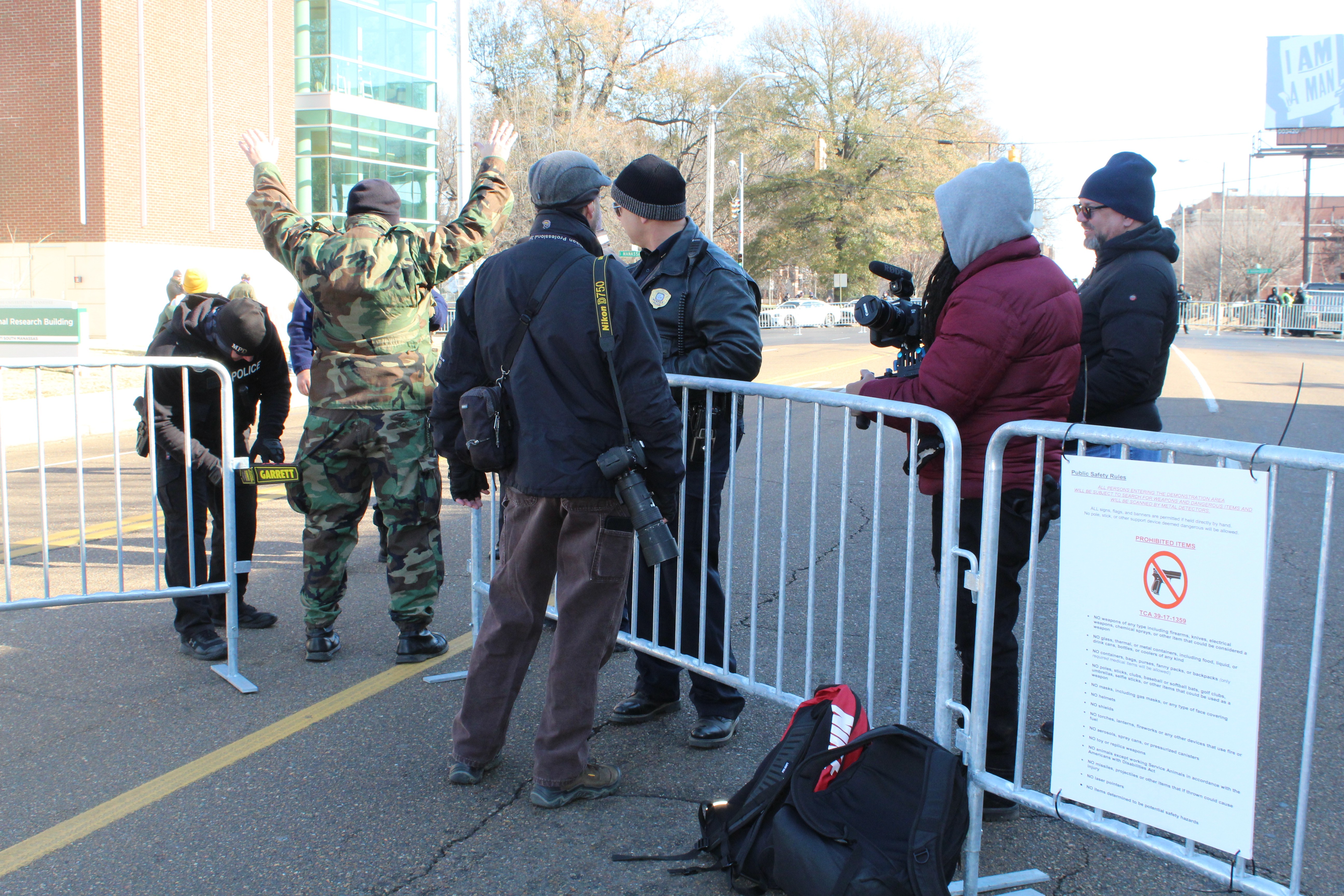On July 9, 2017, roughly 80 people gathered in Tom Lee Park for street theater skits and speeches that focused on social injustices, including state-sanctioned police killings of unarmed black Americans. The societal ills addressed in the gathering were the same as those that drove thousands of protesters to shut down the I-40 bridge one year earlier.

That gathering was small potatoes for the Memphis Police Department when stacked against other thousands-strong protests in Memphis spurred by either the election of Donald Trump (the satellite Memphis Women’s March) or his policies (the now-legal travel band on majority Muslim nations).
Yet, the few dozen folks that gathered in the stifling heat were under the gaze of the MPD all the same, a gaze that included one helicopter, three mounted officers, one police van equipped for multiple arrests, and several officers either on foot or driving through the park.
Currently, Memphis Mayor Jim Strickland finds himself defending more than $200,000 in police overtime for his personal security detail for the 2018 fiscal year. The amount is nothing to sniff at, but it’s a small sliver of the $20 million in overtime for the MPD during the 2018 fiscal year.
Both the mayor and MPD Director Michael Rallings cite the need for millions in police overtime as an effect resulting from a two-pronged cause — dire understaffing of the police force and political protests.
The former is an issue entirely too complex for this little space, but the latter can be boiled down to a question of police presence at protests. How much is too much?
Strickland points to a December protest in 2016 wherein seven protesters staged a “die-in” on his front lawn in East Memphis as one of the events that would usher in a new era of 24-hour security detail for the mayor and his family.
Some of the seven or so protesters appeared to be peering into the home’s windows, causing alarm for the mayor. His security detail is an expense Strickland begrudgingly accepted when the political turned just a little too personal for his or Rallings’ comfort.
The mayor also faces online threats that threaten violence against him and his family routinely, many of them spurred by those furious at the thought of a monument to slave trader, founding Ku Klux Klan member, and Confederate General Nathan Bedford Forrest being removed from his place of honor in a public park.
The few-dozen people monitored by a disproportionate police presence at the Bridge Protest reunion were nonviolent. Protests in front of McDonald’s that call for an end to the poverty wages they pay their employees are nonviolent. The 2017 August rally at Health Sciences Park calling for the removal of the Forrest monument was nonviolent, in spite of the police-incited chaos that ensued once protestors were randomly pulled from the crowd for arrest.
It’s a verifiable truth that organized protests in Memphis since the 2016 Bridge Protest have not resulted in violence against persons or property. On occasions that protestors are arrested, their charges of disorderly conduct or obstruction of a highway are usually dropped the next morning.
It’s also a verifiable truth that police often respond to protests, even ones that have a city-issued permit, with expensive tactical resources such as helicopter surveillance and Blue Crush vehicles.
Rallings and Strickland must reevaluate the degree of police response to peaceful protests. Because in the months or years to come, it’s unreasonable to expect anything other than more organized actions from Memphis communities directly threatened by the Trump administration. The GOP’s rush to replace Justice Anthony Kennedy’s Supreme Court vacancy is already stoking fear among Americans concerned for abortion access, equal marriage, labor unions, or affirmative action.
Should MPD continue with the same level of police response to nonviolent protests, it’s likely that overtime woes will continue to strain the city’s budget. And though MPD recruitment efforts have earmarked funds, the staffing goal of 2,300 officers by 2021 may offer little relief in overtime expenses amid the political climate that is driving Americans into the streets in numbers not seen in decades.
No one should hold their breath waiting for any easement of the two primary causes of police overtime according to Rallings, but everyone who pays city taxes should ask Rallings to reevaluate the use of already strained police resources to monitor non-violent protests.
Micaela Watts is a Memphis-based freelance reporter.